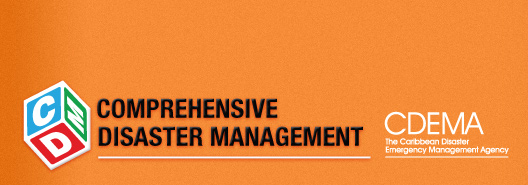|
You may need to survive on your own after a disaster, at least for a few days. Sometimes, help arrives within hours and other times it could take weeks. We have all seen the images on television and in newspapers of people forced into crowded hospitals or standing in extremely long lines waiting for food. With a little preparation, you can reduce the chances of this happening to you.
Assembling Emergency Supplies
You should always have an emergency kit ready. This kit should have supplies to last for about 3 to 7 days. You may have to change some of the items in this kit every few weeks – for example the water and food – but it should always be prepared in advance.
It should contain:
Water: a gallon a day for everyone in your care.
Food: a three day supply of non-perishable foods. Keep in mind if anyone in your family has a special diet (infants, diabetics and the elderly). Most of this food will be in cans so remember to include a can opener. You may also need paper plates and plastic utensils.
Battery powered or hand crank radio: Remember utilities may be down after the storm. You should also carry extra batteries for the radio.
Flashlight: This should be battery powered so you’ll need extra batteries for this too.
First Aid Kit: This must contain any special medicine that your family members may have to take. It should also have painkillers, antiseptic, medicines and bandages.
Bleach: This is to disinfect water. The bleach you use should have sodium hypo-chlorite as its active ingredient. DO NOT use bleach that has any added ingredients, like fabric softener or perfumes. To use it, add eight drops per gallon to your drinking water and let it settle for at least half an hour before you drink it.
Extra fuel: This would be for any family vehicles.
Matches and candles: These are to be used very carefully and only if the flashlight runs out of batteries.
Moist toilettes, garbage bags and tissue paper: these are for personal sanitation.
Breathing masks: These are especially important if you live near to a volcano.
Cell phone: You should also pack the phone charger and an extra phone battery.
Waterproof box: This is to store all your important documents like, passports, marriage and birth certificates, personal identification, insurance etc. You can also store your valuables (money, keys, jewellery) in here.
Personal care items: Things like shampoo, toothpaste, toothbrushes, soap and hand sanitizer should also be brought.
Blankets and pillows: These are so you can be comfortable if you have to stay away from home.
A change of clothes: At least one for everyone in your care.
Coping Items: These include toys and books for children as well as some form of entertainment for you.
Basic First Aid
You should at least have an idea of what to do if someone gets injured during a disaster. Always see a doctor for serious injuries but you can tend to minor damage yourself – at least until you can get medical help.
Accidents
Cuts and Grazes
A bleeding cut or graze usually stops after a few minutes when the blood clots. However, you do need to care for them properly, in order to prevent an infection.
Treatment
- Stop the bleeding. If the scrape hasn’t stopped bleeding on its own, apply pressure to the area and elevate the wound.
- Clean the wound. Use clean water to wash the scrape or use gauze or a cotton pad to apply a cleanser like hydrogen peroxide. Don’t use soap directly on the scrape because this can cause irritation.
- Apply an antibiotic cream to prevent further infection.
- Cover the wound with a bandage.
- Watch for signs of infection.
- You may need to get a tetanus shot if something dirty caused the wound.
Burns, Scalds and Bruises
Burns
Burns are injuries to body tissues and can be caused by heat, chemicals or radiation. Scalds are from wet heat, like steam or hot liquids. The type of burn will determine the seriousness of the injury and what you’ll have to do to fix it. There are three types of burns:
First Degree Burns
First degree burns damage only the outer layer of skin. You can treat these by yourself unless it involves major portions of someone’s face, hands, feet, buttocks, groin or a major joint.
|
Signs
- Redness
- Mild pain
- Swelling
|
|
Treatment
- Plunge the burned area into cold water, or hold it under a cold running tap for 10 minutes or until the pain decreases or stops.
- Cover with a clean gauze dressing for protection.
|
|
Second Degree Burns
Second degree burns go through to the second layer of skin.
Signs
- Blisters
- Rough, red skin
- Swelling
- Extreme pain
|
|
Treatment
- Remove all clothing, jewellery and watches from the burned area unless it is sticking to the skin.
- Pour a lot of cold water over the affected area for at least 10 minutes.
- Gently blot area dry. Do not rub. Rubbing may break the blisters which would open it to infection.
- Lightly cover the entire burned area with a clean, dry dressing. If fluid soaks through, cover with another layer but don’t remove the first layer.
- Raise a burned arm or leg to reduce swelling, but be careful not to burst any blisters.
|
|
Third Degree Burns
Third degree burns are less painful than second degree burns because the nerve
cells in the affected tissue are actually destroyed, but the damage is greater. The
burn goes through to the third layer of skin and can damage muscle and bones.
|
Signs
- Whitish or charred appearance
|
|
Treatment
- Do not remove any clothing near or at the site of the burn.
- Do not apply cold water or medication to the burn.
- Place clean, dry cloths (strips of a clean sheet) over the damaged area.
- If burns are on arms or legs, raise the arm or leg to reduce swelling.
- If victim has burns on the face, check frequently to make sure he is not having difficulty breathing.
- Get the victim to a doctor as soon as possible.
|
Caution!
- Don't use ice. Putting ice directly on a burn can cause a burn victim's body to become too cold and cause further damage to the wound.
- Don't apply butter or ointments to the burn. This could cause infection.
- Don't break blisters. Broken blisters are more vulnerable to infection.
Bruises
Bruises occur when a fall or blow causes bleeding into the tissues beneath the skin.
|
Treatment
- Put ice in a plastic bag.
- Wrap the bag in a towel (applying the ice directly to the skin can cause frostbite).
- Place it on the bruised area for about 20 minutes.
The cold reduces the blood flow to the area and therefore limits bleeding into the skin and reduces the size of the bruise.
|
Severe Bleeding
Blood can be lost very rapidly from a severed or torn artery. Severe blood loss can lead to shock, unconsciousness, or death.
External Bleeding
If an adult loses more than 1 litre of blood, or a child loses as little as one-third that amount, blood loss is considered severe. Before you try to stop the bleeding remember to wash your hands and put on synthetic gloves. If organs have been displaced, please do not try to move them. Simply treat the wound and then seek medical help.
- Have the injured person lie down and cover the person with a blanket to prevent loss of body heat. Position the person's head slightly lower than the trunk or elevate the legs – this reduces the risk of fainting by increasing blood flow to the brain. If possible, also elevate the site of bleeding.
- Remove any obvious dirt or debris from the wound. Don't remove any large or more deeply embedded objects. Don't probe the wound at this point, just try to clean it.
- Apply pressure directly on the wound until the bleeding stops. Use a clean bandage or cloth and put constant pressure on it for at least 20 minutes. Maintain pressure by binding the wound tightly with a bandage (or a piece of clean cloth) and adhesive tape. Use your hands if nothing else is available. If possible, wear rubber or latex gloves or use a clean plastic bag for protection.
- Don't remove the gauze or bandage. If the bleeding continues and seeps through the gauze or other material you are holding on the wound, don't remove it. Instead, add more absorbent material on top of it.
- Squeeze a main artery if necessary. If the bleeding doesn't stop with direct pressure, apply pressure to the artery delivering blood to the area of the wound.
- Immobilize the injured body part once the bleeding has stopped. Leave the bandages in place and get the injured person to the emergency room as soon as possible.
If you suspect internal bleeding, seek medical help immediately.
Fractures and Broken Bones
A fracture is a broken bone. It requires medical attention. When medical attention is not immediately available, you can try to:
- Treat any bleeding as you normally would.
- Move the victim as little as possible. (Movement may further displace broken bones and damage organs).
- Cover an open wound with a clean dressing.
- For most support, secure the injured part to a sound part of a body. Fractured arms should always be supported against the body with a sling and a bandage when possible.
- Keep the person warm and watch for signs of shock.
Dislocations
A dislocation is a displacement of one or more bones at a joint and most frequently happens at the shoulder, elbow, thumb, finger or jaw.
Signs
- Swelling.
- The affected area will look deformed.
- Pain and tenderness.
- Possible discoloration of the affected area.
Treatment
|
DO NOT try to force back a dislocated joint yourself. This should only be done by a doctor.
- Apply a splint to the joint to keep it from moving.
- Try to keep joint elevated to slow blood flow to the area.
- A doctor should be contacted to have the bone set back into its socket.
|
Foreign Body in the Eye or Ear
Eye
This is if the object is floating on the white of the eye.
- Wash your hands
- Try to flush out the foreign object with clean water. You can cup the water in your palm or put the water in a tea cup or a small drinking glass with the rim on the eye socket.
Caution!
Do not rub the area.
Do not remove an object that’s embedded in the eyeball.
Do not remove a large object that makes closing the eye difficult.
If you cannot remove the object or if you have removed it and the person is still in pain, contact a doctor immediately.
Ear
A foreign object in the ear can cause pain and hearing loss. Usually you know if an object is stuck in your ear, but small children may not be aware of it.
|
If the foreign body is lodged in place, DO NOT attempt the move it (object may be
pushed further in).
|
- Sit the victim down.
- Gently pour tepid water into the ear until it floods, carrying the object out.
- If this does not work, seek medical help.
|
|
back to top
|












